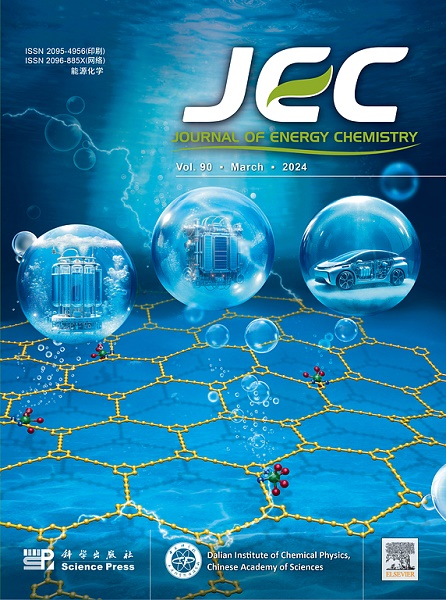Enhancing electrochemo-mechanical properties of graphite-silicon anode in all-solid-state batteries via solvent-induced polar interactions in nitrile binders
IF 13.1
1区 化学
Q1 Energy
引用次数: 0
Abstract
All-solid-state batteries (ASSBs) with sulfide-type solid electrolytes (SEs) are gaining significant attention due to their potential for the enhanced safety and energy density. In the slurry-coating process for ASSBs, nitrile rubber (NBR) is primarily used as a binder due to its moderate solubility in non-polar solvents, which exhibites minimal chemical reactivity with sulfide SEs. However, the NBR binder, composed of butadiene and acrylonitrile units with differing polarities, exhibits different chemical compatibility depending on the subtle differences in polarity of solvents. Herein, we systematically demonstrate how the chemical compatibility of solvents with the NBR binder influences the performance of ASSBs. Anisole is found to activate the acrylonitrile units, inducing an elongated polymer chain configuration in the binder solution, which gives an opportunity to strongly interact with the solid components of the electrode and the current collector. Consequently, selecting anisole as a solvent for the NBR binder enables the fabrication of a mechanically robust graphite-silicon anode, allowing ASSBs to operate at a lower stacking pressure of 16 MPa. This approach achieves an initial capacity of 480 mAh g−1, significantly higher than the 390 mAh g−1 achieved with the NBR/toluene binder that has less chemical compatibility. Furthermore, internal stress variations during battery operation are monitored, revealing that the enhanced mechanical properties, achieved through acrylonitrile activation, effectively mitigate internal stress in the graphite/silicon composite anode.

求助全文
约1分钟内获得全文
求助全文
来源期刊

Journal of Energy Chemistry
CHEMISTRY, APPLIED-CHEMISTRY, PHYSICAL
CiteScore
19.10
自引率
8.40%
发文量
3631
审稿时长
15 days
期刊介绍:
The Journal of Energy Chemistry, the official publication of Science Press and the Dalian Institute of Chemical Physics, Chinese Academy of Sciences, serves as a platform for reporting creative research and innovative applications in energy chemistry. It mainly reports on creative researches and innovative applications of chemical conversions of fossil energy, carbon dioxide, electrochemical energy and hydrogen energy, as well as the conversions of biomass and solar energy related with chemical issues to promote academic exchanges in the field of energy chemistry and to accelerate the exploration, research and development of energy science and technologies.
This journal focuses on original research papers covering various topics within energy chemistry worldwide, including:
Optimized utilization of fossil energy
Hydrogen energy
Conversion and storage of electrochemical energy
Capture, storage, and chemical conversion of carbon dioxide
Materials and nanotechnologies for energy conversion and storage
Chemistry in biomass conversion
Chemistry in the utilization of solar energy
 求助内容:
求助内容: 应助结果提醒方式:
应助结果提醒方式:


